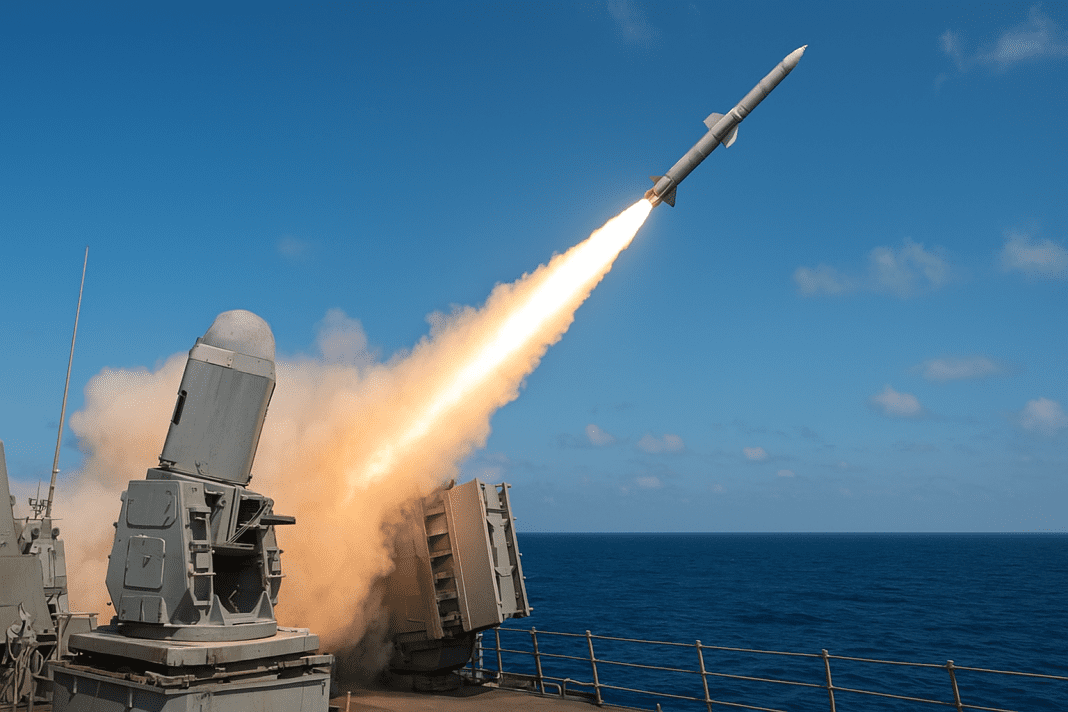The military forces of Western countries are facing a difficult challenge. They need advanced weapons to fight enemies who often have more numbers and resources. At the same time, it is becoming harder to produce new weapons due to limited budgets and strained supply lines. One possible solution that is being explored is the use of dual-use missiles. These are weapons that can act both as offensive missiles and defensive missiles. While this idea sounds promising, it comes with technical difficulties and trade-offs that could affect its usefulness.
Why Dual-Use Missiles Are Gaining Attention
Dual-use missiles are designed to perform more than one role. For example, they can be used to shoot down enemy aircraft or missiles, but they can also strike enemy ships or land targets. The main reason militaries are interested in such weapons is that it allows them to use fewer systems to do more tasks. This is important when facing enemies that have many more weapons and personnel.
A well-known example of this approach is the SM-6 missile used by the United States Navy. The SM-6 can act as a surface-to-air missile (SAM) and can also target ships and land installations. It has been tested in exercises where it successfully hit a ship. Similarly, the Anglo-French Future Cruise/Anti-Ship Weapon (FC/ASW) is being developed to attack ships, land targets, and high-value aerial targets. Even in Ukraine, Russia has been using some of its surface-to-air missiles in a way similar to artillery rockets.
💣 Poseidon-style torpedoes, laser tanks and mystery missiles storm Beijing streets
Another reason militaries are turning to dual-use missiles is that many radar and sensor systems are already designed to integrate both attack and defense operations. For example, the Patriot air defense radar can track enemy missiles and help intercept them. It seems logical to build missiles that can work in coordination with such advanced sensors.
The Challenges of Designing Dual-Use Missiles for Multiple Roles
Even though dual-use missiles are attractive, designing them is not easy. Each type of missile has its own strengths based on its purpose. Surface-to-air missiles are built to quickly chase fast-moving targets like aircraft and incoming missiles. They use powerful solid rocket motors to close the distance fast. Anti-ship or cruise missiles, on the other hand, often use jet engines that allow them to fly lower, maneuver better, and avoid radar detection.
The SM-6 missile, for instance, is very capable but also very expensive. Each missile is estimated to cost about USD 10 million. It also uses a warhead that is optimized for air targets, not large ships. The warhead is light so that the missile can fly fast and turn quickly. This makes it less effective against bigger targets like warships.
Some military experts have considered using missiles like the SM-6 in large groups to overwhelm enemy defenses. For example, a mix of ballistic missiles and cruise missiles could flood an enemy ship’s radar system and allow other weapons to strike it. However, purpose-built ballistic missiles like China’s YJ-21 might be more cost-effective and efficient in such situations.
U.S. Accuses Russia of Sabotaging UN Sanctions to Fuel War With North Korea’s Missiles
Balancing Power and Precision
Furthermore, many dual-use missiles use blast fragmentation warheads. These explode and scatter shrapnel to hit fast or soft targets like aircraft or missile launchers. But such warheads are not ideal for sinking or heavily damaging ships. Even though the force of impact, known as kinetic energy, is important for causing damage, the size and design of the warhead matter too.
Some engineers are exploring alternatives like hit-to-kill warheads. These warheads rely on speed and precision to destroy targets instead of using explosive force. In theory, this could allow a missile to strike different types of targets. But much depends on where the missile hits and how powerful its impact is. Also, ballistic trajectories may limit the missile’s range compared to jet-powered cruise missiles.
The FC/ASW missiles are being developed with these challenges in mind. The RJ10 is a supersonic missile with a ramjet engine, designed to hit fast and high-altitude targets like bombers. The TP15 is a subsonic missile built to avoid radar and hit ground and naval targets. However, balancing speed, stealth, range, and payload size remains a difficult task.
Use of Dual-Use Missiles on Land and Sea
The maritime domain has seen more progress in the use of dual-use missiles. The SM-6 is a leader in this area and is already being used in drills to sink ships. Still, it is expensive and has limitations in targeting larger vessels. Naval command officers must carefully manage how such missiles are allocated between defense and offense roles.
In the land environment, dual-use missiles may be more practical in some cases. Many ground targets, such as missile launchers and artillery units, are smaller and easier to destroy with lighter warheads. Israel, for example, has shown that kinetic hit-to-kill missiles can effectively destroy these kinds of systems.
🎯 Bullseye in the sky — Ukraine’s air defense shoots down ballistic missiles with German precision
Yet, land operations come with their own challenges. Active radar seekers used in SAMs may not be effective against ground targets unless very short wavelengths are used. Infrared seekers may need to assist in identifying targets, which adds cost and complexity. Alternatively, air support could redirect missiles toward targets, but this requires advanced networking systems and fast data links.
Despite these challenges, some military analysts believe that dual-use missiles could be helpful in deterring enemy actions. Even if they are not perfect, they could disrupt or damage enemy missile systems quickly enough to reduce their effectiveness.
